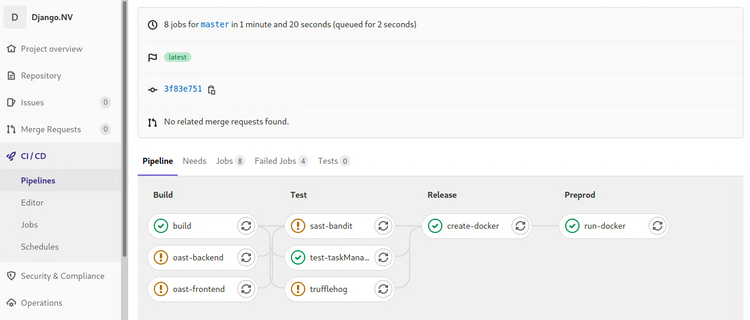

2021-02-07 22:08:00

I'll talk about it in more detail at a later point in time, but I'm about a week's worth into the Certified DevSecOps Professional training by Practical DevSecOps. So far my impressions are moderately positive, more about that later.
In the labs we'll go through a whole bunch of exercises, applying a multitude of security tests to a Gitlab repository with a vulnerable application. Most of the labs involve nVisium's sample webapp django.nV.
Having reached the half-way point after that one week, I had not encountered two crucial parts of the DevOps / CICD pipeline which I'm not at all familiar with. We're applying all kinds of tests, but we never did the steps you'd expect before or after: creating the artifacts, deploying and running them. As I've said before, I'm #NotACoder.
Instead of focusing on one of the next chapters, today I spent all day improving my Gitlab and Docker install by applying all the required trusts and TLS certificates. This, in the end, enabled me to create, push, pull and run a Docker image with the django.nV web app.
If anyone's interested: here's my Dockerfile and gitlab-ci.yml that I'd used in my homelab. You cannot just throw them into your own env, without at least changing username, passwords and URLs. You'll of course also need a Docker host with a gitlab-runner for deployment.
Note: The Docker deploy and execute steps show a bad practice, hard-coded credentials in a pipeline configuration. Ideally this challenge should be solved with variables or even better: integration with a vault like Azure Vault, PasswordState or CyberArk PasswordVault. For now, since this is my homelab, I'll leave them in there as a test for Trufflehog and the other scanners ;)
kilala.nl tags: work, sysadmin, studies,
View or add comments (curr. 0)
All content, with exception of "borrowed" blogpost images, or unless otherwise indicated, is copyright of Tess Sluijter. The character Kilala the cat-demon is copyright of Rumiko Takahashi and used here without permission.